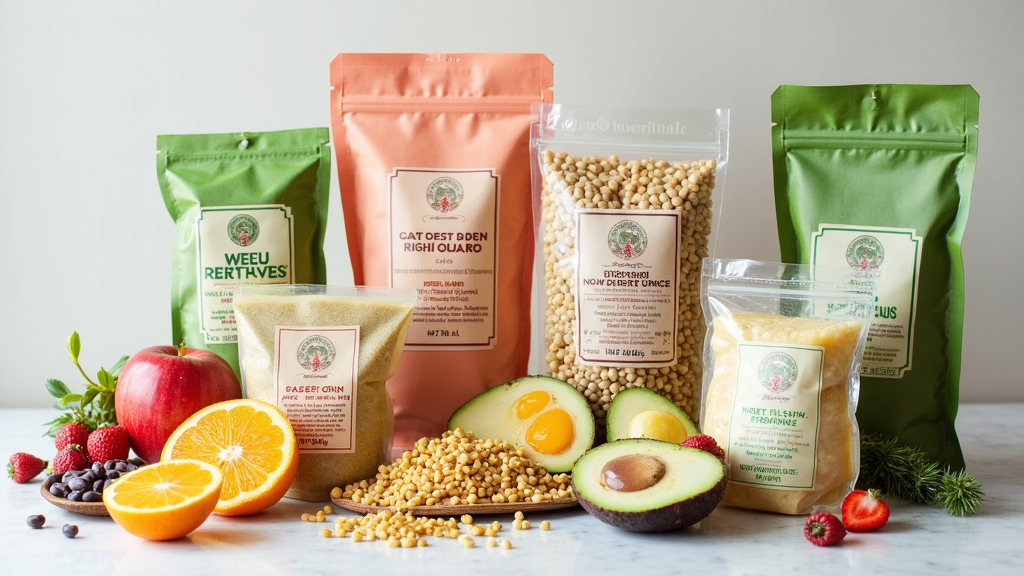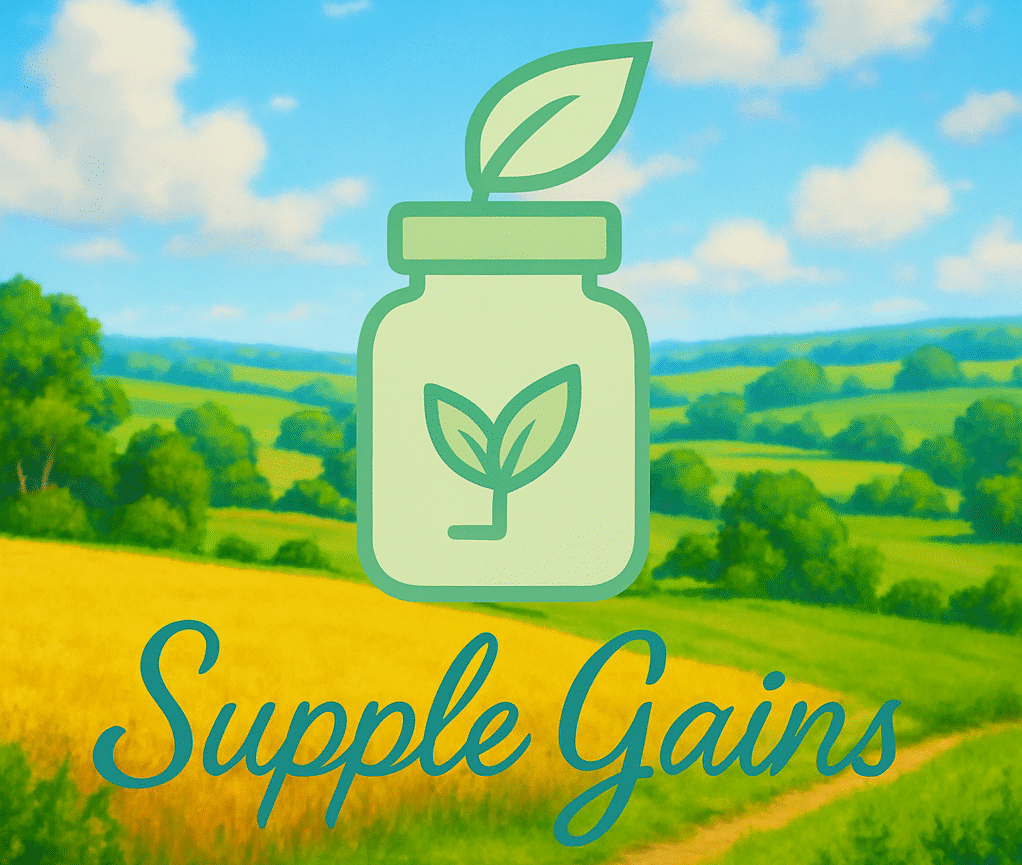Reading nutrition labels is one of those practical habits that can completely change the way you shop and eat, especially when following a plantbased lifestyle. There is a lot of info packed into those tiny labels, and knowing how to break it down helps you make better choices and keep your meals balanced. In this guide, I’ll walk through the basics, highlight what’s most useful, and share convenient tips for plantbased eaters.

Why Nutrition Labels Matter for PlantBased Foods
Nutrition labels are like cheat sheets for your food. For anyone going plantbased; whether for your health, the environment, or just for variety; these labels help you spot sneaky ingredients, keep tabs on nutrients you need more of, and avoid things that might not actually fit your plantbased goals.
The plantbased food category has spread like wildfire lately. Not every item is automatically healthy, though. Some are packed with added sugar, sodium, or processed oils, while others are loaded with fiber and protein. Checking the label gives you a quick way to sort the good stuff from the less awesome options.
Getting Comfortable with the Nutrition Label Basics
The front of the package can make big promises, but flipping to the back tells the real story. The nutrition facts panel lays out all the info you need for making choices that line up with your plantbased goals. Here’s what you’ll usually see:
- Serving Size: This is the starting point for figuring out everything else on the label. Serving sizes are not always what you’d expect, and sometimes they’re smaller than you’d eat at once, so it’s worth checking.
- Calories: Gives you an idea of how much energy each serving packs. Plantbased foods can vary a lot in calories, especially between things like leafy greens and nuts.
- Macronutrients (Fat, Carbohydrates, Protein): I always pay close attention here, especially protein and fiber content since some plantbased foods can be lower in those compared to animalbased counterparts.
- Micronutrients (Vitamins, Minerals): These are tucked in at the bottom. B12, iron, calcium, and vitamin D matter a lot in plantbased diets, so it’s handy to spot them here and figure out what you might need to add elsewhere.
How To Spot the Ingredients That Matter
The nutrition facts panel gives you the numbers, but the ingredients list reveals what’s actually in your food. For plantbased eaters, this section can be super useful. Here are a few things I always keep an eye out for:
- Hidden Animal Ingredients: Items like whey, casein, gelatin, and certain food colorings aren’t plantbased but might sneak into processed foods.
- Sources of Protein: If I’m looking for a protein boost, I check if a product gets most of its protein from things like peas, soy, lentils, or whole grains instead of processed isolates.
- Added Sugar and Sodium: Plantbased doesn’t always mean healthy. Meat alternatives or snacks are sometimes loaded with sugar or salt, so I make it a habit to scan for these.
What to Look For: Key Nutrients for a PlantBased Diet
There are a few nutrients that take center stage when eating plantbased. Here’s a quick breakdown of what I try to watch for on the nutrition labels:
- Protein: Whole plant foods like beans, lentils, tofu, seeds, and nuts usually provide good amounts, but some snacks or meat alternatives might not. Checking the label takes out the guesswork.
- Fiber: One perk of a plantbased diet is the fiber content. Aim for foods with at least 3g of fiber per serving to help keep your gut happy and digestion on track.
- Iron: Plantbased iron (nonheme iron) isn’t absorbed as easily as from animal sources. Checking for iron content helps you pick foods that support your needs, especially for people who don’t eat animal foods.
- Calcium: Especially important if you’re skipping dairy. Look for fortified plant milks or products with added calcium to help keep bones strong.
- Vitamin D and B12: Not always present in plantbased foods unless they’re fortified. If you don’t see these listed on the label, you might consider a supplement or check for other fortified foods.
Quick Checklist for Reading Labels on PlantBased Foods
- Start at the Top: Check the serving size and calories to make sure it matches how much you’ll actually eat.
- Review the Protein and Fiber: Look for at least 5g protein and 3g fiber for things like breads, cereals, or bars to help keep you energized and full.
- Look for Added Sugars: Try to pick options with 5g of sugar or less per serving, especially for snacks and alternative milks.
- Check the Ingredients List: The shorter and less processed, the better. Remember that ingredients are listed by weight, so if sugar or oil show up early in the list, it may not be the healthiest pick.
- Sodium Levels: Stay below 300mg per serving whenever possible, since too much sodium adds up fast.
What to Keep in Mind About PlantBased Processed Foods
Even though plantbased food is getting more convenient; think frozen burgers, creamy “cheese” sauces, or chewy protein bars; not all these options are healthy by default. Sometimes they’re ultraprocessed just like their animalbased counterparts. I aim for balance by using these convenient products sometimes, but still centering most of my meals around whole foods.
For example, a plantbased sausage might have more sodium and saturated fat than a homemade bean patty. Being mindful about label reading means I can work these convenience foods into my diet without going overboard on salt, fat, or additives. Most days, I lean towards simple meals built from grains, beans, veggies, and fruits, but processed plantbased options can still be a tasty treat.
Common Nutrition Label Terms Explained
Some nutrition label phrases can be confusing, so here’s a quick guide to what they actually mean when I spot them on plantbased products:
- Vegan – Contains no animal ingredients, though it isn’t always the same as healthy or unprocessed.
- PlantBased – Focuses on plants, but you should check labels for dairy, eggs, or honey if avoiding all animal products.
- Fortified – Has vitamins or minerals added, like B12 or calcium in plant milks and other products aimed at plantbased eaters.
- No Added Sugar – Doesn’t have sugar from cane, syrup, etc., but natural sugars from fruit may still be present, so spot those on the ingredients list, too.
RealLife Example: Comparing Two PlantBased Snacks
I picked up two snack bars labeled as “plantbased.” The first one had brown rice syrup as the second ingredient, only 2 grams of protein, and almost 200mg sodium. The other had whole nuts, 6 grams each of protein and fiber, and minimal added sugar. Checking the labels shows that just because something is plantbased, that doesn’t mean it automatically stacks up nutritionwise. This kind of real world compare helps me choose snacks that really support my goals instead of just sounding healthy.
Whenever I’m stuck between options, I also check the micronutrients. For snacks, a bar that brings extra calcium or iron is a bonus, while a long list of unrecognizable additives has me thinking twice.
Frequently Asked Questions
Here are some common questions plantbased eaters (and label readers) like me often have:
Is there a difference between vegetarian and vegan on nutrition labels?
Yes. Vegan means no animal products at all, while vegetarian might still include things like dairy or eggs. Always doublecheck the ingredients if you avoid all animal products.
How do I know if plant milks are fortified?
Check the nutrition panel for vitamin D, B12, and calcium, and look for the word “fortified” in the ingredients list. Some brands are better than others for added nutrients.
Do plantbased processed foods have enough protein?
Sometimes. Look for products with at least 5g protein per serving and check what the protein source is (soy, pea, nuts, etc.). If you’re active or trying to build muscle, tracking protein is especially important.
How can I limit processed ingredients?
Go for foods with shorter ingredients lists and items that are close to their whole food forms, like beans, nuts, or whole grains. Shopping the perimeter of the store and reading labels on anything packaged helps keep things simpler.
Final Thoughts
Learning to read nutrition labels for plantbased foods makes shopping way easier and gives your meals a better nutritional punch. It helps you find foods that offer the right balance of protein, fiber, vitamins, and minerals, while avoiding the processed fillers you don’t need. After a little practice, checking nutrition labels can be quick and even enjoyable. It’s kind of like going on a mini food detective mission every time you shop.
Build this habit and you’ll set yourself up to enjoy a plantbased lifestyle that supports your taste buds, your health, and your personal goals!
